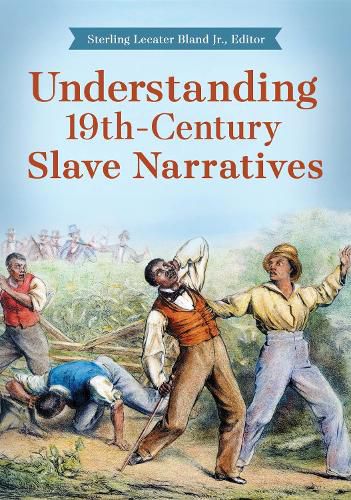Readings Newsletter
Become a Readings Member to make your shopping experience even easier.
Sign in or sign up for free!
You’re not far away from qualifying for FREE standard shipping within Australia
You’ve qualified for FREE standard shipping within Australia
The cart is loading…






African American slave narratives of the 19th century recorded the grim realities of the antebellum South; they also provide the foundation for this compelling and revealing work on African American history and experiences.
Naturally, it is not possible to really know what being a slave during the antebellum period in America was like without living the experience. But students CAN get eye-opening insight into what it was like through the gripping stories of bravery, courage, persistence, and resiliency in this collection of annotated slave narratives from the period.
Each of the collected narratives includes an introduction that provides readers with key historical context on the particular life examined. Moreover, each narrative is accompanied by annotations that broaden the reader’s comprehension of that primary document. The primary source documents in this volume tell enthralling stories, such as how slave woman Ellen Craft utilized her particularly pale complexion to pose as a free white man overseeing his slaves to free herself and her husband, and how Henry Brown successfully shipped himself to freedom in a box measuring scarcely 3 feet by two feet by six inches deep-despite being more than six feet tall.
Presents information and primary source documents that support such key subject areas as American history, ethnic studies, and African American history, among other areas
Introduces readers to unique slave narratives that often center on such topics as entrepreneurship, racial violence and resistance, gender, and subjects regarding the color line like pigmentation and passing
Situates each slave narrative in historical context through the use of a document introduction and annotations
Supplies slave narratives that are important primary sources and will help students with building interpretive, critical-thinking skills needed to be successful 21st-century learners
$9.00 standard shipping within Australia
FREE standard shipping within Australia for orders over $100.00
Express & International shipping calculated at checkout
African American slave narratives of the 19th century recorded the grim realities of the antebellum South; they also provide the foundation for this compelling and revealing work on African American history and experiences.
Naturally, it is not possible to really know what being a slave during the antebellum period in America was like without living the experience. But students CAN get eye-opening insight into what it was like through the gripping stories of bravery, courage, persistence, and resiliency in this collection of annotated slave narratives from the period.
Each of the collected narratives includes an introduction that provides readers with key historical context on the particular life examined. Moreover, each narrative is accompanied by annotations that broaden the reader’s comprehension of that primary document. The primary source documents in this volume tell enthralling stories, such as how slave woman Ellen Craft utilized her particularly pale complexion to pose as a free white man overseeing his slaves to free herself and her husband, and how Henry Brown successfully shipped himself to freedom in a box measuring scarcely 3 feet by two feet by six inches deep-despite being more than six feet tall.
Presents information and primary source documents that support such key subject areas as American history, ethnic studies, and African American history, among other areas
Introduces readers to unique slave narratives that often center on such topics as entrepreneurship, racial violence and resistance, gender, and subjects regarding the color line like pigmentation and passing
Situates each slave narrative in historical context through the use of a document introduction and annotations
Supplies slave narratives that are important primary sources and will help students with building interpretive, critical-thinking skills needed to be successful 21st-century learners